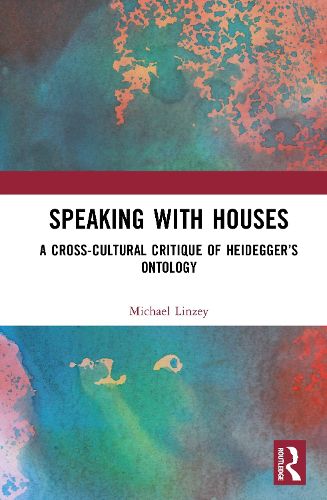Readings Newsletter
Become a Readings Member to make your shopping experience even easier.
Sign in or sign up for free!
You’re not far away from qualifying for FREE standard shipping within Australia
You’ve qualified for FREE standard shipping within Australia
The cart is loading…






This book critically examines the concept of "Being" in Western philosophy and its manifestation in architecture.
The book traverses diverse cultural and historical contexts, analysing five architectural works: the Djoser Step Pyramid in ancient Egypt, the Pantheon in imperial Rome, the Tai-an tea house in late medieval Japan, the Te Tokanganui-a-Noho meeting house in colonial New Zealand and Mies van der Rohe's Seagram Building in modern New York. Through these case studies, it challenges Martin Heidegger's assertion that "language is the house of Being," proposing instead that "Being" is a construct specific to Western ontology. By exploring architectural poiesis across various cultures, the book reveals that the Western notion of "Being" is not a universal foundation for architectural creation. Each examined structure embodies distinct cultural and philosophical principles, such as the concept of mu in Japanese tea houses, which signifies "neither Being nor non-Being," and the "no-Being" tradition in Maori tikanga. This comparative analysis underscores the diversity of architectural expressions and their underlying philosophies, offering readers a nuanced understanding of how different cultures conceptualize existence and space.
This book is an invaluable resource for scholars in architecture, philosophy and cultural studies. Its interdisciplinary approach provides a comprehensive critique of Western metaphysical assumptions, encouraging readers to reconsider the relationship between language, being, and architectural form. By integrating architectural analysis with philosophical inquiry, it fosters a deeper appreciation of cultural diversity in architectural practices and invites academics to explore alternative ontological perspectives in the built environment.
$9.00 standard shipping within Australia
FREE standard shipping within Australia for orders over $100.00
Express & International shipping calculated at checkout
This book critically examines the concept of "Being" in Western philosophy and its manifestation in architecture.
The book traverses diverse cultural and historical contexts, analysing five architectural works: the Djoser Step Pyramid in ancient Egypt, the Pantheon in imperial Rome, the Tai-an tea house in late medieval Japan, the Te Tokanganui-a-Noho meeting house in colonial New Zealand and Mies van der Rohe's Seagram Building in modern New York. Through these case studies, it challenges Martin Heidegger's assertion that "language is the house of Being," proposing instead that "Being" is a construct specific to Western ontology. By exploring architectural poiesis across various cultures, the book reveals that the Western notion of "Being" is not a universal foundation for architectural creation. Each examined structure embodies distinct cultural and philosophical principles, such as the concept of mu in Japanese tea houses, which signifies "neither Being nor non-Being," and the "no-Being" tradition in Maori tikanga. This comparative analysis underscores the diversity of architectural expressions and their underlying philosophies, offering readers a nuanced understanding of how different cultures conceptualize existence and space.
This book is an invaluable resource for scholars in architecture, philosophy and cultural studies. Its interdisciplinary approach provides a comprehensive critique of Western metaphysical assumptions, encouraging readers to reconsider the relationship between language, being, and architectural form. By integrating architectural analysis with philosophical inquiry, it fosters a deeper appreciation of cultural diversity in architectural practices and invites academics to explore alternative ontological perspectives in the built environment.